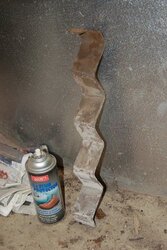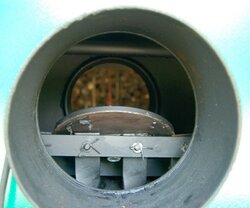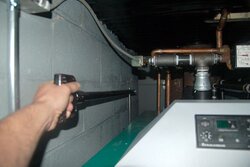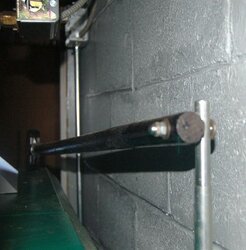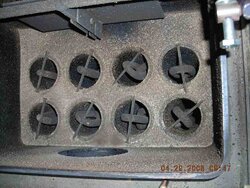Solo 30
100,000 btu output, 4.01 cu.ft. firebox, holds 41 gal.
Solo 40 ($600.00 more)
140,000 btu output, 5.35 cu.ft. firebox, holds 54 gal.
Bi-level, 1800 sq. ft. main floor, full,unfinished basement for now, (no baseboard down there yet) I will install fin-tube.
We use plenty of hot water, whirlpool tub.
I'd like to get the boiler soon, no storage this year, probably next spring.
Should I get the 40 to be safe, will I burn more wood with it?
I was told by the tarm people if I choose the 40, I may have to tend the boiler more the first winter, because of no storage, smaller more frequent fires. Next year-with storage, definitely no problem with the bigger unit, as a matter of fact it will be more convenient because I can run full load at max. less times.
Using the slant fin heat loss calculator I came up with:
108,658 heat loss (btu/hr) that's with heating the basement with allot of baseboard.
100,000 btu output, 4.01 cu.ft. firebox, holds 41 gal.
Solo 40 ($600.00 more)
140,000 btu output, 5.35 cu.ft. firebox, holds 54 gal.
Bi-level, 1800 sq. ft. main floor, full,unfinished basement for now, (no baseboard down there yet) I will install fin-tube.
We use plenty of hot water, whirlpool tub.
I'd like to get the boiler soon, no storage this year, probably next spring.
Should I get the 40 to be safe, will I burn more wood with it?
I was told by the tarm people if I choose the 40, I may have to tend the boiler more the first winter, because of no storage, smaller more frequent fires. Next year-with storage, definitely no problem with the bigger unit, as a matter of fact it will be more convenient because I can run full load at max. less times.
Using the slant fin heat loss calculator I came up with:
108,658 heat loss (btu/hr) that's with heating the basement with allot of baseboard.


